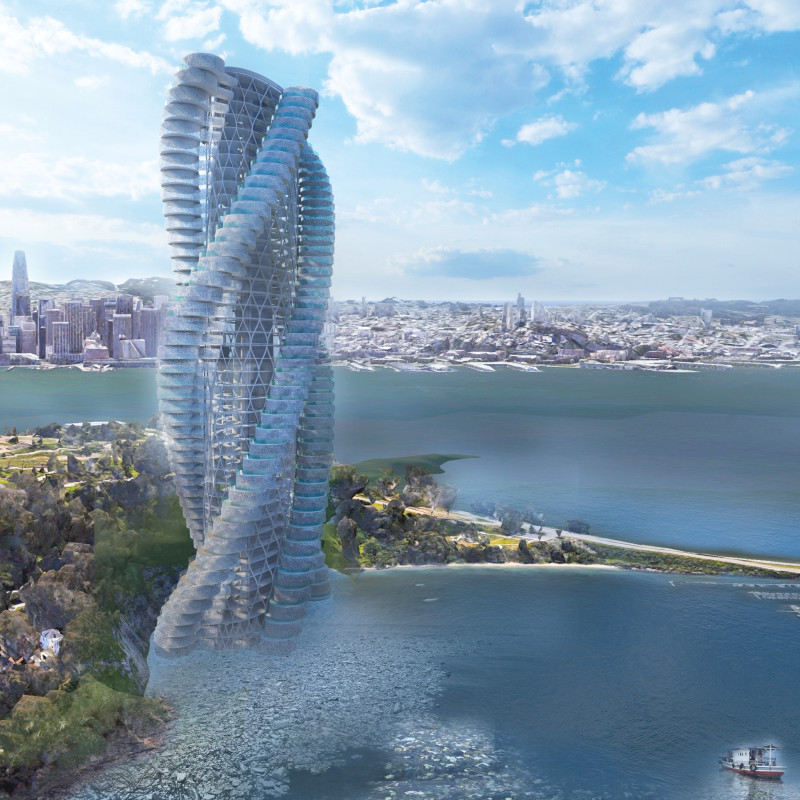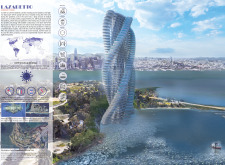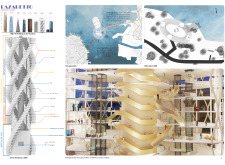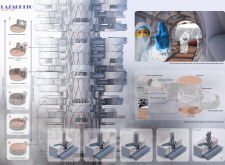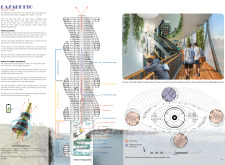5 key facts about this project
The Lazaretto Pandemic Tower sits on Yerba Buena Island in California. It serves as a hospital during times of health emergencies and also manages the challenges of medical waste. The design centers around the idea of flexibility, using prefabricated modules that can be quickly assembled and adapted for different uses after a pandemic. The structure could later function as research labs or public viewing spaces. The focus on health and environmental sustainability shapes the building's approach to urban needs.
Architectural Layout
The tower's design features a clear vertical organization. Hospital facilities are placed above sea level, including support, inpatient, and outpatient departments. Below the water surface, a pollution study laboratory processes medical waste. This arrangement efficiently uses space while emphasizing the connection between healthcare and environmental care.
Waste Management Innovation
A significant aspect of the Lazaretto design is its integrated waste management system. The laboratory in the lower section of the tower is dedicated to handling medical waste, which helps reduce pollution risks. This approach addresses the increasing concerns of ocean contamination and implements effective methods for waste collection and treatment.
Energy Efficiency
The building also focuses on sustainability through advanced waste-to-energy systems. It incinerates medical waste at high temperatures, turning it into steam that produces electricity. The remaining materials are carefully managed in a combustion chamber, highlighting a commitment to a zero-waste philosophy that incorporates energy recovery into its operation.
Design Detailing
The tower is designed to connect with its surroundings, using local plants and scenic views to foster a healing environment. This thoughtful integration offers functional advantages and enhances the overall visual experience, ensuring the structure meets its various roles while prioritizing resilience and sustainability.


